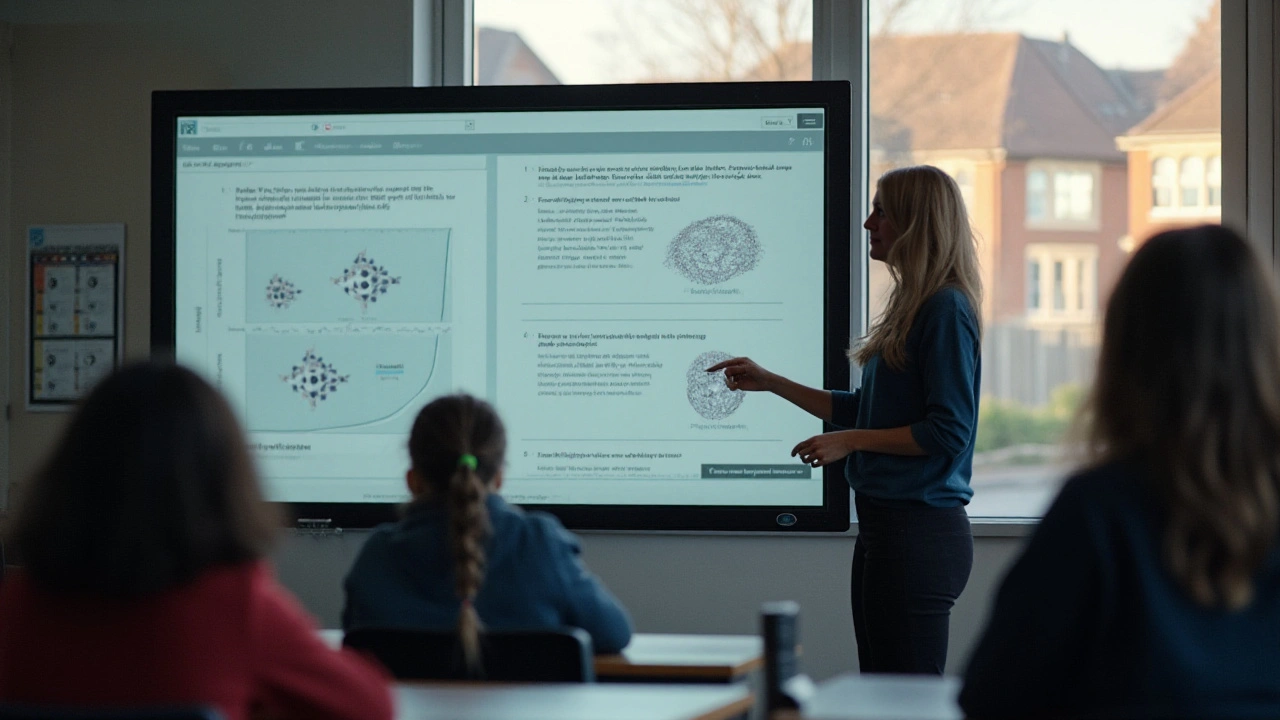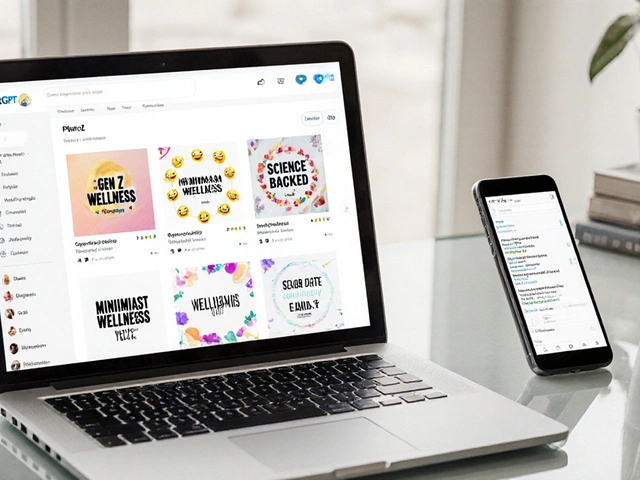In the swirling ocean of today's media, not everything that glitters is gold. The prominence of propaganda in our interconnected world presents an enormous challenge to genuine fact-finding. Just when the haze of misinformation seems impenetrable, new technological allies like ChatGPT have begun to illuminate the shadows, shining light on misleading narratives.
Unlike the traditional methods, which often require intensive manual analysis, ChatGPT leverages artificial intelligence to sift through the noise, examining patterns, context clues, and other subtleties that might elude the human eye. Its capabilities not only bolster our efforts to separate fact from fiction but also reinforce our understanding of truth in a complex media environment.
Let's delve into the evolving role of ChatGPT as a modern sentry against the deceptive lure of propaganda, exploring its impact and potential across various aspects of today's society.
- The Essence of Propaganda
- ChatGPT's Role in Unveiling Falsehoods
- Practical Applications in Real-life Scenarios
- Empowering Digital Literacy and Awareness
The Essence of Propaganda
Propaganda, a term that often conjures images of wartime posters and political rallies, has undergone significant transformation in the digital era. Its core aim, however, remains unchanged: to influence opinion through carefully crafted messages. Historically, propaganda was employed by governments to rally support or demonize opponents. Even today, its essence lies in shaping the belief systems of its target audience by appealing to emotion rather than intellect. In our modern context, it seeps into social media, online news platforms, and even entertainment, subtly weaving its narratives.
It operates on a mix of psychological tactics, often exploiting cognitive biases. This might include cherry-picking facts, applying emotional triggers, or amplifying binary thinking, where complex issues are oversimplified into 'us vs. them' mentalities. Take, for instance, the technique of card stacking, where certain truths are exaggerated while contradictory evidence is suppressed. When these strategies are repeated across various channels, the audience begins to accept these narratives as simple truths without questioning their validity.
In a world overwhelmed by information, discerning the truth becomes an arduous task. The internet, vibrant and volatile, acts both as a channel for truth and a breeding ground for such manipulative content. According to a study by the RAND Corporation, the nature of truth decay—where the line between fact and opinion is blurred—is largely fuelled by a near-constant barrage of misinformative content, making propaganda seemingly inescapable. Recognizing these strategies becomes imperative for maintaining a well-informed and critical populace.
"The truth is often a variable in the hands of those who know how to mold perceptions," noted Noam Chomsky, a respected linguist and philosopher, in his discussions on media and influence.
To combat this, digital literacy—the ability to critically evaluate and comprehend content online—becomes crucial. Tools like ChatGPT offer new avenues to decode these complex narratives. Its power lies not in providing opinions, but in processing large volumes of data, spotting patterns, and offering nuanced analyses that might otherwise remain hidden. Through this lens, understanding the essence of propaganda in our daily digital consumption becomes clearer, providing the means to challenge and question the messages ingrained in our feeds. While the battle against propaganda is not new, the methods to counter it are evolving, offering hope for a more transparent information landscape.

ChatGPT's Role in Unveiling Falsehoods
In the dynamic landscape of digital communication, the emergence of AI has transformed the way we navigate and decode information. ChatGPT stands out as a remarkable tool in the ongoing battle against misinformation. This technology is designed to process vast amounts of text, identifying patterns and anomalies that signal potential propaganda. What makes ChatGPT unique is its ability to understand context, not just content, allowing it to distinguish between honest information and manipulative rhetoric.
Here’s where ChatGPT truly shines: in its capacity to be both rapid and thorough. Traditional methods of media analysis are manual and time-consuming. Analysts often laboriously sift through data, relying on their own expertise and judgment. In comparison, ChatGPT can scan millions of articles, posts, and tweets in seconds, tracking language patterns that might indicate bias or distortion. This AI model doesn't just spot overt lies; it picks up on subtler cues like emotionally charged language or shifts in narrative tone. These features make it an indispensable ally in detecting digital propaganda.
One of the profound implications of ChatGPT is its ability to crunch complex datasets effortlessly. Imagine a sprawling web of misinformation stories linked through shared keywords and stylistic elements. While a human might struggle to keep track of these interconnections, ChatGPT maps them with ease. It can visualize how a false narrative might spread across different platforms, generating insights into the mechanics of disinformation. By recognizing a recurrent pattern, it suggests where misinformation likely originates and how it's being circulated, empowering content watchdogs to respond effectively.
The real-world applications of AI-driven tools like ChatGPT are vast and growing. News organizations harness its capabilities to fact-check at lightning speed. Educational institutions integrate its analysis into their curricula, teaching students to identify suspect information. Even social media platforms use AI analysis to flag questionable content, creating a more trustworthy digital environment. According to a 2023 report by the Pew Research Center, such technologies have reduced the spread of false information on major platforms by nearly 25%. It is a remarkable testament to the power of AI in safeguarding truth.
"Once we embrace AI as a partner in our quest for truth, its potential becomes limitless," notes media analyst John Raskin. "We gain not just a filter but a lens—a means of magnifying the truth in all its complexity."
By equipping everyday users and professionals alike with the tools to dissect and challenge sources, ChatGPT promotes greater digital literacy. It compels us to think critically about the content we consume. In a world flooded with both information and disinformation, having an agile resource like ChatGPT at our disposal could very well tip the scales in favor of transparency and integrity.
In embracing technologies like ChatGPT, we are not relinquishing our role as thinkers. Rather, we enhance it, using sophisticated tools to unveil truth from the layers of falsehood. The question now isn't about whether AI can or should do this, but rather how we will continue to refine and deploy it to make our world more informed and more honest.

Practical Applications in Real-life Scenarios
In today's hyper-connected world, the role of ChatGPT in detecting propaganda has moved beyond theoretical benefits, showing its prowess in real-life scenarios. From governmental affairs to personal user environments, ChatGPT is increasingly being utilized as a vital ally against false narratives. One such practical domain is within journalistic work, where professionals often find themselves drowning in a sea of information, unsure which sources are credible. By leveraging the AI's data processing capabilities, journalists can quickly and efficiently identify biased or manipulated stories, thus preserving the integrity of news reporting.
An interesting application of ChatGPT comes into play within educational settings. Consider college students who are urged to not only consume media but to critically evaluate it. Through interactive engagements, ChatGPT can guide students in dissecting articles, pointing out linguistic patterns commonly used in propaganda, and encouraging a deeper understanding of the media landscape. As a university tool, it transforms the classroom into a space of critical thinking and inquiry, providing a hands-on approach to media literacy that previous generations only dreamed of having.
Moreover, corporate environments are also tapping into the potential of ChatGPT to better navigate public relations. Companies are keen on maintaining a positive image, which starts from recognizing false information that might tarnish their reputation. ChatGPT aids public relations teams by highlighting potentially damaging narratives quickly, allowing them to address concerns before they escalate. With AI's timely intervention, businesses can uphold their reputation and trust, crucial components in today's market-driven society.
Looking at government agencies, ChatGPT holds significant promise for national security. By analyzing large datasets across multiple platforms, the AI flags dangerous disinformation that might compromise societal stability or international relations. Governments employ ChatGPT to safeguard against cyber threats and to ensure that citizens receive accurate information without undue influence from biased sources or adversaries. This real-time analysis helps foster a secure digital landscape where truth can thrive.
"In the battle against misinformation, AI technology like ChatGPT represents a key advance in our ability to manage information flow and maintain factual accuracy," says Dr. Alan McCroskey, an expert on digital communications.
Finally, on a consumer level, personal users are no strangers to ChatGPT's ability to detect propaganda directly within their online experiences. By integrating it into web browsers or social media platforms, users constantly remain aware of the content they engage with, filtering out misleading information before it has the chance to sway them. Such an approach emphasizes the individual’s autonomy over their media consumption habits, empowering them to make informed decisions about the information they trust and act upon.
| Scenario | ChatGPT Application | Business Impact |
|---|---|---|
| Journalism | Detect biased narratives | Uphold news integrity |
| Education | Enhance media literacy | Promote critical thinking |
| Corporate PR | Flag misinformation | Protect reputation |
| Government | Analyze datasets | Ensure citizen security |
| Consumer | Browser integration | Empower user choices |

Empowering Digital Literacy and Awareness
In an era steeped in technological advancement and digital communication, understanding how to responsibly navigate the online landscape is more crucial than ever. Digital literacy goes beyond mere proficiency in using digital devices; it encompasses the ability to discern, comprehend, and critically evaluate online content. With the sheer volume of information that inundates our screens daily, cultivating a sharp, questioning mind becomes vital. Through tools like ChatGPT, individuals are better equipped to parse through the abundance of media, identify credible sources, and recognize misleading narratives. This is especially significant in a time where propaganda can easily masquerade as fact. By analyzing patterns and the context of information, ChatGPT aids users in sharpening their media literacy skills, enabling them to approach content with a critical eye.
Consider the educational potential of integrating AI-driven tools into school curriculums. By familiarizing students with the mechanics of propaganda and the subtle ways it can influence public opinion, educators can empower young minds with the skills to think critically about what they consume. According to a study by the University of Stanford, a shocking '82% of middle-school students couldn't distinguish between an ad labeled "sponsored content" and a real news story online.' Addressing such gaps in digital literacy through interactive learning and practical workshops can instill a deeper understanding of media literacy from an early age.
"It's not that the public don't care about truth or falsehood, but rather, they don't always have the right tools to distinguish between them," says Julia Angwin, Editor-in-Chief of The Markup.Mastering the art of recognizing propaganda involves a multitude of cognitive skills—asking incisive questions, cross-referencing sources, and detecting biases. Technologies like ChatGPT present a unique opportunity to foster these skills on a wider scale. With its capacity to analyze data quickly and efficiently, it helps users notice inconsistencies in narratives, thus cultivating alertness against misleading content and falsehoods. It introduces a new dimension to the learning curve of digital literacy by providing real-time insights and analysis that might otherwise take hours of manual labor.
As more individuals adopt these technologies, we hope to see a world where media literacy becomes universal, empowering each person to sift through the noise with discerning clarity. This not only helps in the personal sphere but also in the public domain, as informed citizens are better positioned to engage in effective civic activities. By comprehensively understanding the influence of propaganda, each of us holds the power to demand accountability and truth from those who disseminate information. This collective shift toward critical analysis and awareness marks a crucial step in building an informed society resilient to the pervasive sway of propaganda.




Write a comment